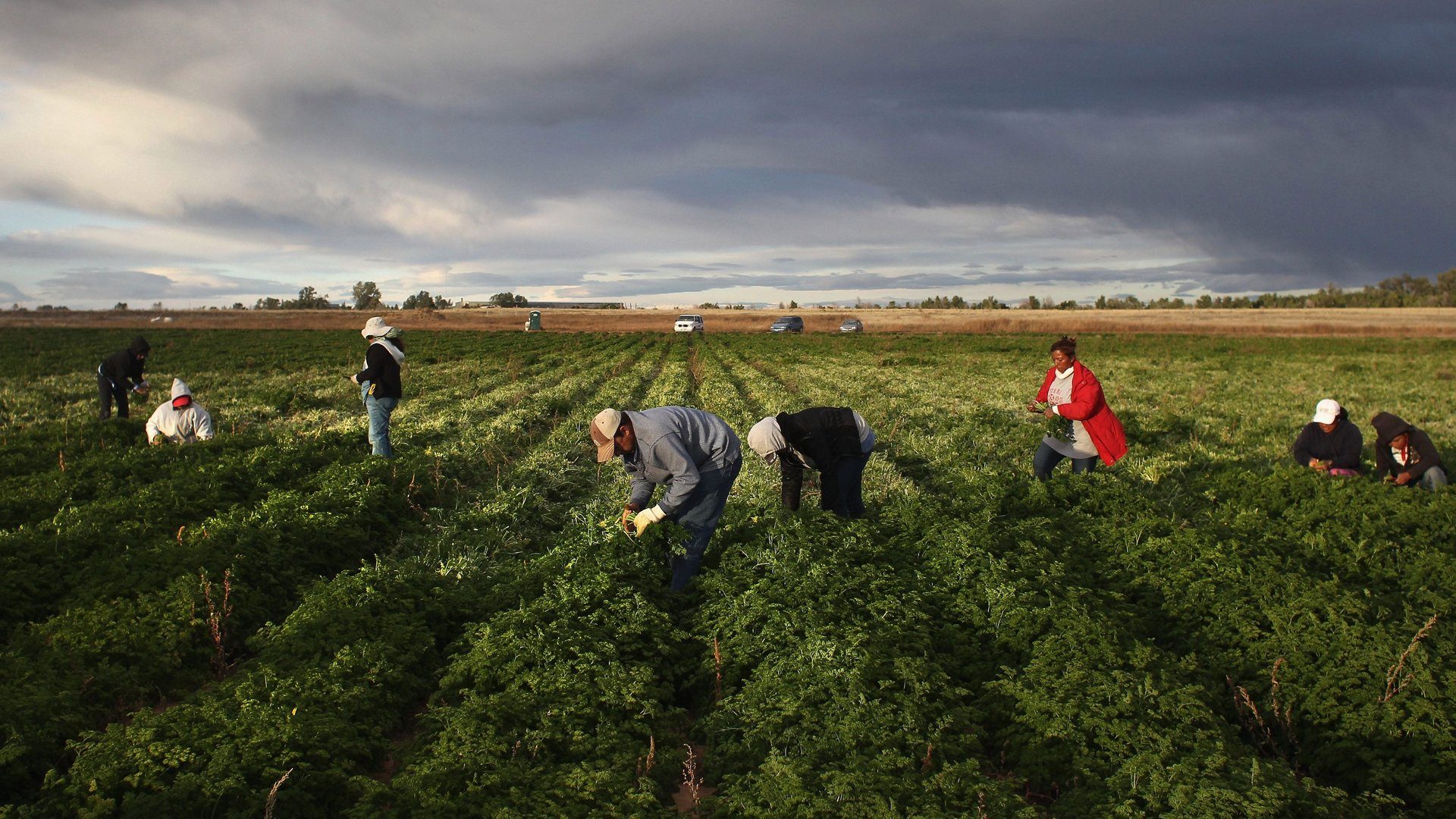The Trump administration is streamlining visas for Mexican farm workers
Trump wants a wall with Mexico. America’s farmers want a way around it for hundreds of thousands of farm workers. In a sign of the Trump administration’s politically motivated priorities, farmers are getting their wish.


Trump wants a wall with Mexico. America’s farmers want a way around it for hundreds of thousands of farm workers. In a sign of the Trump administration’s politically motivated priorities, farmers are getting their wish.
On April 3, the US Department of Agriculture (USDA) launched a new streamlined process for the H-2A visa process that allows agricultural guest workers, mostly from Mexico, to work legally in the US. For years, delays in the program have meant that food rotted in the fields, or crops weren’t planted on time. Even for farmers who applied for the visa, a mountain of paperwork awaited.
No longer. The H-2A visa is now one of the most streamlined visa applications in the US government. The new USDA process, built in partnership with the US Digital Service (USDS), begins with a click on the Farmers.gov site. For the first time, the site lets different agencies—the Department of Labor, US Citizenship and Immigration Services, the Department of State, as well as state agencies—share data to review H-2A visas. Farmers click through each stage, submit forms, download calendar reminders for their phones, and get a workflow to help make decisions. While paperwork isn’t eliminated (some agencies didn’t embrace an online-only process), it radically simplifies a process complex enough to have supported a cottage industry for managing H-2A applications.
Why did this particular issue get special treatment for modernizing government? The H-2A visa was seen as a priority for Republicans eager to please GOP-leaning farmers who need workers. Democrats, of course, would like to make less restrictive the immigration policies that they say are undermining America’s economy and historical openness toward immigrants.
“It’s a really nonpartisan issue,” says Cyrus Sethna of the USDS, a team of designers and coders dedicated to redesigning government technology. The USDS began life after the failure of the Healthcare.gov website in 2013. The Obama administration recognized the need to update antiquated technology in the government machinery. Despite early reports that the Trump administration planned to slash its staff and mothball the unit, the USDS has been deployed in a government modernization effort, with projects ranging from simplifying small-business loan applications to fixing veterans’ medical record keeping. In its 2017 report to Congress, the USDS said it had 200 individuals completing tours of service, working everywhere from the defense department to the Small Business Administration.
The H-2A program is rapidly expanding. It requires farmers to try to hire locally first, and then pay workers (who stay for less than a year) more than prevailing wages in the US, and provide adequate housing, transportation, and food (although that’s not always followed, and the program’s critics have advocated for reforms to curb instances of abuse and human trafficking). Since 2006, the number of H-2A visas has multiplied from less than 50,000 to more than 150,000 today. Such workers constitute about 10% of the nation’s agricultural workforce, and some experts expect that figure could double. For now, many, many more people work as undocumented laborers. Absent comprehensive immigration reform to meet US labor needs, a faster H-2A is the best the US government can manage.